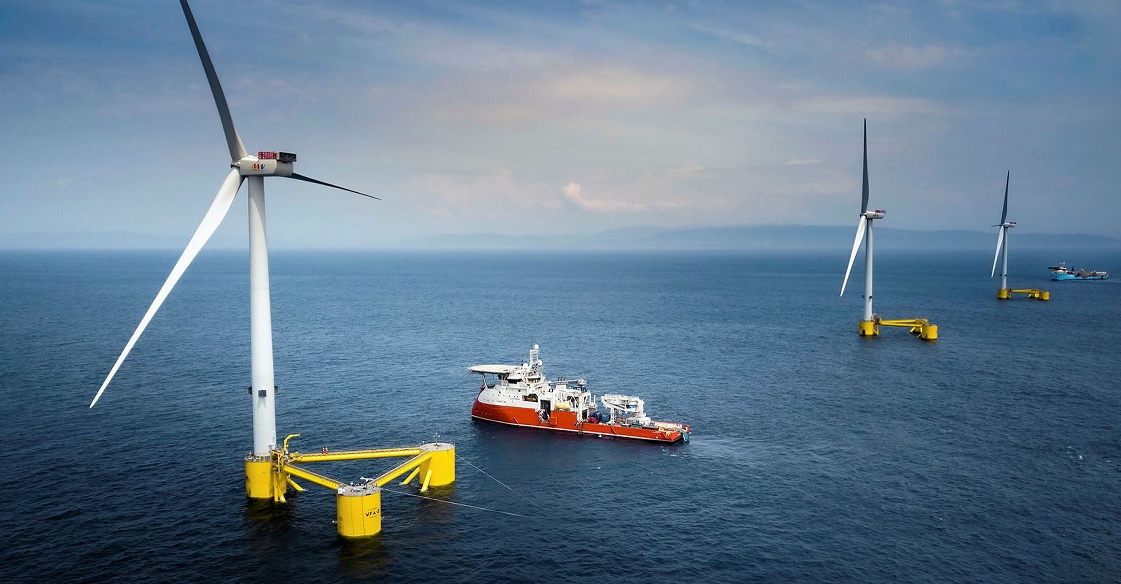RIO DE JANEIRO, BRAZIL – A study carried out by the British consultancy OWC has identified 54 countries that are particularly suitable for developing floating wind power.
Among them is Brazil, whose government recently announced a decree allowing research and projects for offshore wind power generation, the first step in developing and implementing this technology with enormous potential.
Brazil is committed to having 48% renewable energy in its energy mix by 2030, and one of the technologies that could help it achieve this is offshore wind, which the government will promote through a decree whose announcement has already received numerous proposals from those interested in developing this sector, several of which are floating offshore wind developers.

Brazil’s environmental assessment and authorization agency, Ibama, is currently evaluating offshore wind projects totaling more than 80 GW of wind power capacity. That is equivalent to just over 10% of Brazil’s estimated technical offshore wind potential of 748 GW.
Other Latin American countries with high potential for the development of this sector are Argentina, Mexico, Dominican Republic, Costa Rica, Uruguay, and Cuba, according to the study conducted by ORE Catapul’s Floating Offshore Wind Center of Excellence for OWC and which has examined more than 240 territories around the world to identify such potential.
“Floating offshore wind will be central to the future energy mix, but it also brings its own challenges and opportunities, meaning that not all markets are ready or suitable for the future development of this technology.
This study identifies the markets to watch out for in terms of near-term or long-term readiness as key players in the floating wind,” explains Craig Brown, principal consultant at OWC.
KEYS TO ASSESSMENT
Each territory was assessed against minimum technical thresholds, such as coastal access, offshore wind resources, bathymetry, and additional socio-economic filters to support commercial-scale floating offshore wind investments.
The report narrowed the list of potential floating wind energy markets to 54 territories that meet all thresholds using these criteria.
These 54 territories were then assessed as to their near- or long-term readiness for commercial-scale floating offshore wind development based on 11 other criteria covering three categories: (i) technical resources and policy drivers; (ii) commercial investment landscape; and (iii) floating offshore wind market enablers.
In the near-term development (2022-2035), the study has identified 22 countries in Europe, the Americas, and Asia-Pacific that fall into this category, while 32 fall into the long-term category (2035 to 2050).
Portugal, Spain, and Brazil are three countries in the first group, while the second group includes Chile, Argentina, Colombia, Mexico, Dominican Republic, Costa Rica, Uruguay, and Cuba.
“The installed floating wind capacity is currently 0.2 GW. This capacity will need to grow exponentially to support zero-emissions targets in 2050.
“This study provides insight into where, when, and how floating offshore wind can be developed to become a global industry and therefore play a key role in achieving the global zero emissions target,” says Ralph Torr, Head of Floating Wind at ORE Catapult.
He adds, “The study identifies key markets that can contribute 10 GW by 2030 and identifies how these markets can pave the way for widespread deployment worldwide in the late 2030s and 2040s.”
The report was prepared by OWC’s offshore wind market research services team, a consultancy that, together with the group’s parent company ABL Group, has contributed to more than 30 floating wind projects around the world, totaling more than 18 GW of potential capacity.
With information from Energias Renovables

